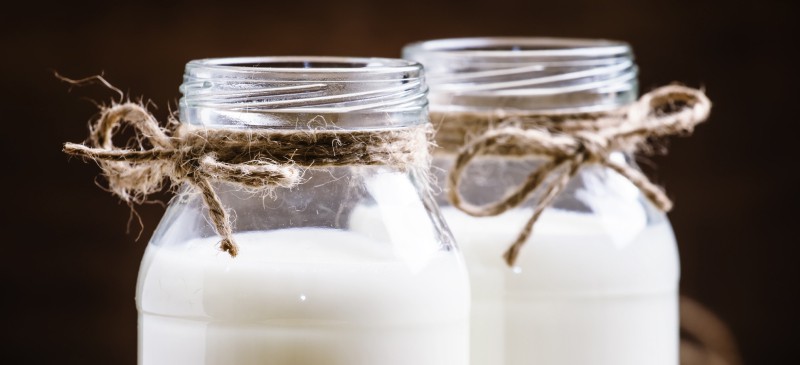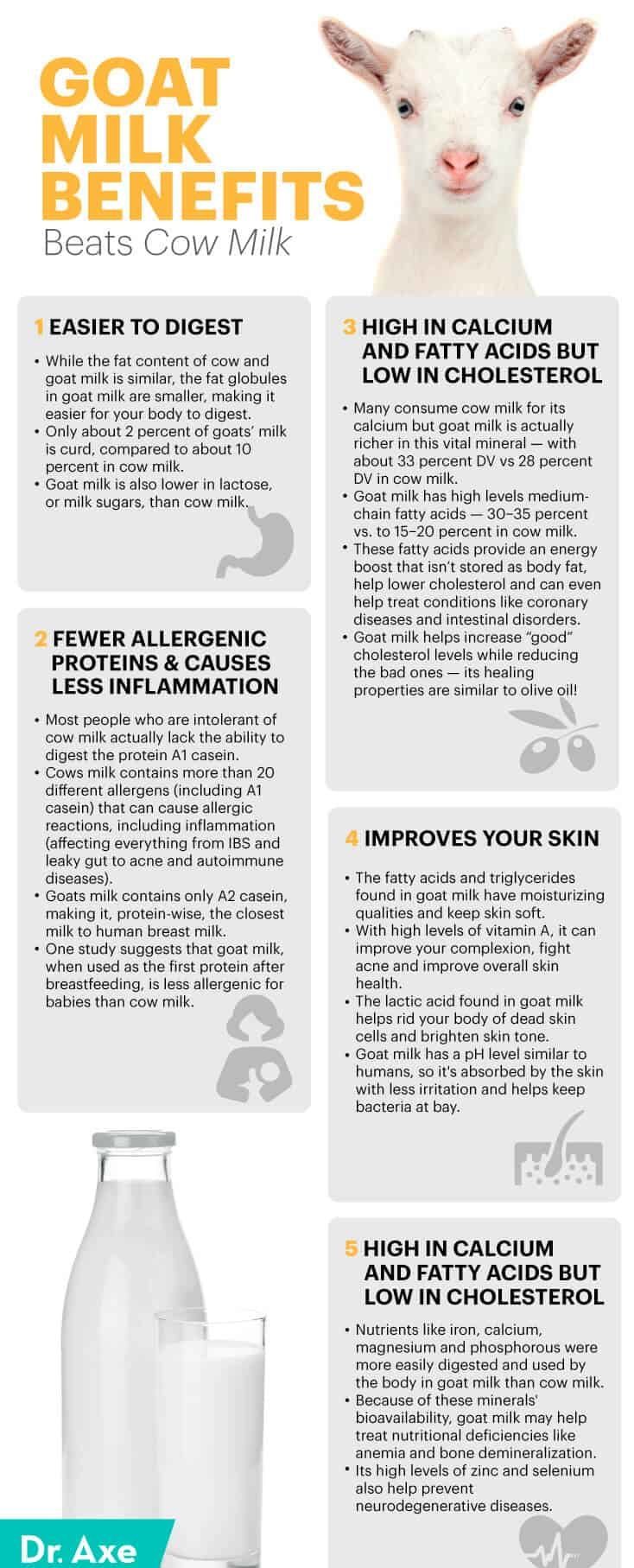This Dr. Axe content is medically reviewed or fact checked to ensure factually accurate information.
With strict editorial sourcing guidelines, we only link to academic research institutions, reputable media sites and, when research is available, medically peer-reviewed studies. Note that the numbers in parentheses (1, 2, etc.) are clickable links to these studies.
The information in our articles is NOT intended to replace a one-on-one relationship with a qualified health care professional and is not intended as medical advice.
This article is based on scientific evidence, written by experts and fact checked by our trained editorial staff. Note that the numbers in parentheses (1, 2, etc.) are clickable links to medically peer-reviewed studies.
Our team includes licensed nutritionists and dietitians, certified health education specialists, as well as certified strength and conditioning specialists, personal trainers and corrective exercise specialists. Our team aims to be not only thorough with its research, but also objective and unbiased.
The information in our articles is NOT intended to replace a one-on-one relationship with a qualified health care professional and is not intended as medical advice.
Goat Milk Benefits Are Superior to Cow Milk
December 7, 2022

For many, cow milk is completely out of the question. It’s difficult to digest, high in allergens and loaded with lactose that can wreak havoc on your gastrointestinal tract. Enter goat milk, a nutrient-rich alternative that’s tasty, easy on the gut and far less inflammatory than regular cow’s milk. For these reasons, many dairy-involved diets like the Paleo, low-carb and ketosis diet recommend goat milk.
Not only is it chock-full of vitamins and minerals that your body needs, but it’s also incredibly versatile. You can easily use goat milk to make healthy cheese, soap, smoothies, skin care products, desserts and more. It’s a great way to add a simple, nutritious twist to your favorite tried-and-true recipes.
What Is Goat Milk?
Goat milk is a type of milk produced by goats. It’s high in many essential nutrients and is a good source of vitamins and minerals like calcium, phosphorus, riboflavin and more. It’s also rich in medium-chain fatty acids. Medium-chain fatty acids are a type of heart-healthy fat that is associated with a wealth of impressive health benefits.
Is goat milk dairy? Like cow milk, goat milk is technically considered a type of dairy because it’s produced from a mammal. However, it’s actually a great alternative to cow milk because it’s easier to digest, less inflammatory and lower in many of the allergens that are commonly found in cow milk.
Nutrition Facts
While it’s not very popular in the western world, goat milk is actually one of the most widely consumed milk drinks in the rest of the world and with good reason. It tastes great, and it’s chock-full of nutrients.
One cup (about 244 grams) of goat milk nutrition contains approximately:
- 168 calories
- 10.9 grams carbohydrates
- 8.7 grams protein
- 10.1 grams fat
- 327 milligrams calcium (33 percent DV)
- 271 milligrams phosphorus (27 percent DV)
- 0.3 milligram riboflavin (20 percent DV)
- 498 milligrams potassium (14 percent DV)
- 483 international units vitamin A (10 percent DV)
- 34.2 milligrams magnesium (9 percent DV)
- 0.1 milligram thiamine (8 percent DV)
- 0.8 milligram pantothenic acid (8 percent DV)
- 29.3 international units vitamin D (7 percent DV)
- 0.1 milligram vitamin B6 (6 percent DV)
- 0.1 milligram copper (6 percent DV)
- 3.4 micrograms selenium (5 percent DV)
- 3.2 milligrams vitamin C (5 percent DV)
In addition to the nutrients listed above, goat’s milk also contains a small amount of vitamin B12, niacin and manganese.
Related: Halloumi: Why You Should Try This Unique, Protein-Rich Grilling Cheese
Health Benefits
1. Easier to Digest
While the fat content of goat and cow milk is similar, the fat globules in goat milk are smaller. That makes it easier for your body to digest. Once it reaches your stomach, the protein in goat’s milk forms a softer curd than cow milk . Only about 2 percent of goat’s milk is curd compared to about 10 percent in cow milk. This helps your body digest it with less irritation than cow’s milk.
Goat milk is also lower in lactose, or milk sugars, than cow milk. Because many people are lactose intolerant or have difficulty digesting the lactose in cow’s milk, studies show that goat’s milk can be a viable option. (2)
2. Fewer Allergens and Less Inflammatory
Most people who are intolerant of cow milk are actually sensitive to one of the proteins found in it, A1 casein, and lack the ability to digest it. Additionally, cow milk is the No. 1 allergy among children and can persist throughout adulthood. That’s because it contains more than 20 different allergens (including A1 casein) that can cause allergic reactions.
Cow milk allergy symptoms are often confused for seasonal allergy symptoms. It’s easy to see why. Cow’s milk allergy symptoms can range from hives and runny noses to abdominal cramping and colic in babies.
A1 casein is highly inflammatory for some people and can contribute to gastrointestinal issues like irritable bowel syndrome, Crohn’s, leaky gut and colitis. It also may play a role in several less obvious problems, such as acne, autoimmune diseases and skin issues like eczema.
While there are some cows who don’t produce A1 casein protein, namely Jersey and Guernsey cows, the majority of bovines in the U.S., Western Europe and Australia are Holstein and Fresian, both of which are A1 casein producers.
On the contrary, milk that contains mostly or exclusively A2 casein produces none of these inflammatory effects. Goat milk contains only A2 casein. That makes it, protein-wise, the closest milk to human breast milk. In fact, one study suggests that goat’s milk, when used as the first protein after breastfeeding, is less allergenic for babies than cow milk.
3. High in Calcium
While cow milk is often touted as one of the main foods high in calcium, there’s no need to worry about not getting enough of calcium when switching to goat milk. It’s actually even richer in the mineral. Goat’s milk contains about 33 percent of the daily recommended value in one cup versus 28 percent in cow milk.
Calcium is essential for many aspects of health. It’s especially important when it comes to bone health. In fact, over 99 percent of the calcium in your body is found in the bones and teeth. It helps boost bone mass and provides the tissue with its strength to maximize bone strength.
4. Helps Reduce Cholesterol Levels
One of the top goat milk benefits for men and women alike is its therapeutic effects on heart health. This is because goat’s milk has high levels of medium-chain fatty acids. In fact, there is about 30 percent to 35 percent as opposed to 15 percent to 20 percent of medium-chain fatty acids in cow milk.
Instead of being stored as body fat, these fatty acids provide an energy boost help lower cholesterol. They can even help treat conditions like coronary heart disease and intestinal disorders.
Goat milk also helps increase “good” cholesterol levels while reducing the bad ones. In fact, it’s got healing properties similar to olive oil and is recommended for keeping high cholesterol in check.
5. Promotes Glowing Skin
The fatty acids and triglycerides found in goat’s milk not only keep your insides running smoothly, but they help you look great on the outside, too. Their moisturizing qualities help keep skin baby soft.
Goat’s milk also has high levels of vitamin A. Studies indicate that vitamin A can improve your complexion, fight acne and improve overall skin health. Meanwhile, the lactic acid found in goat milk helps rid your body of dead skin cells and promotes skin smoothness and thickness.
Because goat’s milk has a pH level similar to humans, it’s absorbed by the skin with less irritation and helps keep bacteria at bay. For this reason, many people often add goat milk lotion and goat milk soap into their natural skin care routines.
6. Enhances Nutrient Absorption
While goat and cow milk might rank similarly for mineral content, goat’s milk might still be the winner. That’s because early studies found that nutrients like iron, calcium, magnesium and phosphorous were more easily digested and used by the body in goat’s milk than cow’s milk.
Because of the bioavailability of these minerals, goat milk also looks promising for treatment of nutritional deficiencies like anemia and bone demineralization. In addition, it can help address all-too-common iron deficiency and magnesium deficiency as well.
In fact, some researchers suggest that goat milk should be consumed regularly by individuals with malabsorption issues, anemia, osteoporosis or prolonged treatments with iron supplements.
Regularly consuming goat’s milk enhances the body’s ability to use iron. It also boosts regeneration of hemoglobin. Combined, this makes goat’s milk a safe and natural way to treat osteoporosis and combat anemia.

Vs. Cow Milk
The biggest difference between goat milk vs. cow milk is in terms of digestibility. Goat’s milk is more easily digestible. This makes it a great option for those with gastrointestinal problems.
Goat’s milk is also better tolerated by those with lactose issues and doesn’t cause inflammation the way cow milk can. It’s also a great option for children once they’ve moved past breastfeeding. Why? It contains fewer allergens than cow milk.
However, because it’s not as common, goat milk can be substantially more expensive than cow milk. This might cause sticker shock at the onset. What’s more, raw goat milk, the best for you, can be difficult to find outside of health food stores and farmers markets. The taste and smell might not also be pleasing to everyone, particularly those raised with cow milk.
Vs. Sheep Milk
Sheep milk is another nutritious option that comes with several health benefits. In fact, one cup of sheep milk contains more calcium, carbohydrates and protein than its goat counterpart. Sheep milk is also higher in many vitamins and minerals. This includes more vitamin B12, vitamin C, folate and magnesium than both goat and cow milk.
Like goat’s milk, sheep’s milk is easily digestible by the body. That’s thanks to small fat globules that make it easier on your digestive tract. It contains similar levels of short- and medium-chain fatty acids as goat milk, so it’s less irritating. Those who can’t get used to the taste of goat’s milk might prefer sheep milk because it’s less tangy.
So why isn’t everyone gulping down sheep milk? Its high fat content is a turnoff for many. Although the fats are mainly monounsaturated fat and polyunsaturated fat (good-for-you fats), one cup contains almost double the amount as cow and goat milk. This may be a concern for those watching their fat intake. Sheep milk is much harder to find as well.
Types
If you’re ready to add goat milk to your family’s diet, you have several options. To really maximize the health benefits, you can try raw goat milk. This can be found at local farmers market or health food stores. Similar to raw milk benefits from a cow, drinking raw goat milk ensures you get the maximum amount of nutrients and health-promoting properties from this delicious drink.
If raw goat milk isn’t available in your area, there are plenty of other options, mainly in fermented foods. If you’ve ever wondered “does goat milk have probiotics?” this is what you may want to look for. These products increase good bacteria to keep you healthy and support nutrient absorption in the gut. One of the best fermented products is goat milk kefir.
The probiotics found in this milk drink can help improve intestinal health, enhance immune function, prevent diarrhea and manage cholesterol levels. Be sure to purchase goat milk kefir to get the great benefits of goat milk. Cow and sheep versions are sold as well. Drink kefir as is, or add it to your favorite dishes that call for yogurt.
If liquid goat milk isn’t your thing, fermented goat milk yogurt might be a good substitute. The probiotics benefits present in goat milk yogurt may help support healthy digestion, lower your risk of diabetes, support weight and fat loss, and reduce high blood pressure. Try it with fruit or granola for a healthy breakfast or snack.
Soft, raw goat cheeses are also packed with probiotics and available around the country. Spread goat cheese on a cracker, or nibble it solo to get all the health benefits in a tasty way.
How to Use
Wondering where to buy goat milk? You can typically find it at many health food stores and farmers markets. It’s usually near the dairy products or in the refrigerated section. Online retailers also contain goat’s milk products, including skin creams, powdered milk and goat milk ghee.
Are you ready to take the goat milk plunge and incorporate it into your diet? If you’re nervous about the flavor of drinking it straight, start with chilled goat milk. It has a less pronounced “goaty” flavor.
When you’re ready to start using goat milk in your favorite recipes, there are few things to keep in mind. Goat milk can essentially be used as a replacement for cow milk in any recipe. However, when it’s heated, pasteurized or processed in any way, there is a distinct “goat” flavor. Those who are longtime fans of the milk might not mind, but it could be a turnoff for newbies.
Goat’s milk is especially tasty in dessert recipes. It gives your favorite sweets a creamy, melt-in-your-mouth texture. It’s also great in smoothies. Combine your favorite fruits and leafy greens, throw in a dash of goat milk, and blend. It’s also the featured ingredient in tzatziki sauce.
History
Goat’s are considered one of the first animals to be domesticated by humans. Studies show that the Bezoar ibex, a type of goat native to western Asia in the Zagros Mountains, may be the first ancestor of the modern domesticated goat.
During the Stone Age, farmers started herding goat’s for their milk, meat and dung, which was used as fuel. Their bones and hair were also collected and used to produce clothing and tools. The earliest evidence of domesticated goat’s can be traced back about 10,000 years to a settlement in Iran. Remains of goat’s have also been uncovered in many other archaeological areas, including Jericho, Jeitun and Choga Mami.
Today, goats are often used for their meat, milk and skin. Some also use goat’s to help clear land or act as pack animals to carry gear or pull carts on hikes.
Risks and Side Effects
Although goat milk can be super healthy and nutritious, there are several disadvantages of goat milk that should be considered as well.
In fact, some of the most common goat milk side effects include digestive issues like gas or bloating. This is because goat milk does contain a small amount of lactose. Although it’s lower than cow milk or other dairy products, it may still cause issues for those with a severe intolerance to lactose.
As always, it’s best to start with a low amount and increase your intake slowly to assess your tolerance. If you experience any negative side effects after consuming goat milk, consider scaling back and decreasing your intake to let symptoms subside.
Keep in mind that goat milk is also not suitable for those following specific diets, like the dairy-free diet or vegan diet. For people following these diets, it’s best to opt for dairy alternatives like almond milk or oat milk instead.
Final Thoughts
- Goat milk is a type of milk produced from goats. Like cow milk, it is technically considered a dairy product.
- Each serving of goat milk is high in many important micronutrients. These include calcium, phosphorus and riboflavin, plus heart-healthy fats and protein.
- One of the biggest differences between goat milk vs. cow milk is its digestibility. Goat milk is easier to digest, less inflammatory and lower in potential allergens.
- Sheep milk is another good alternative to cow milk. It is easy to digest. Plus, it’s even higher in several vitamins and minerals than goat milk.
- Ideally, look for raw goat milk or fermented goat milk to maximize the potential health benefits. You can also opt for goat cheese or use goat milk to make soaps and serums.













